Published on: April 26, 2023 Updated on: February 3, 2024
3 Research-Backed Autonomous AI Examples to Learn From
Author: Daniel Coombes
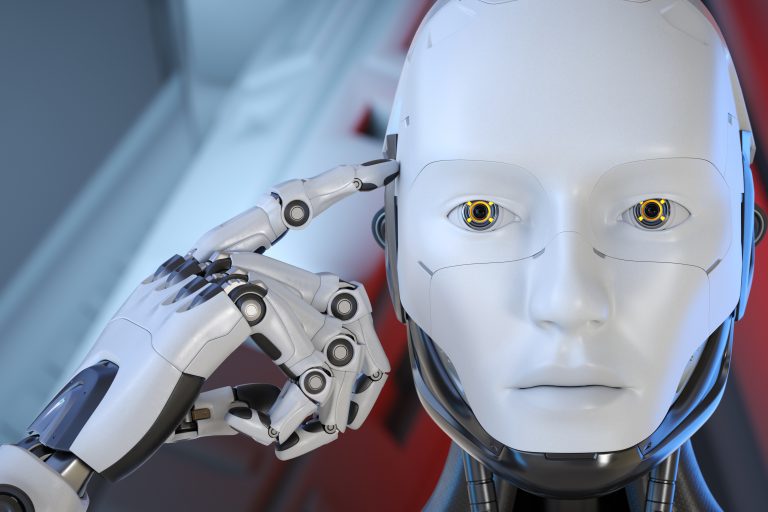
Autonomous artificial intelligence is revolutionizing every aspect of our lives. This incredible technology that allows artificial intelligence to perform actions without human intervention has infiltrated every industry around the globe.
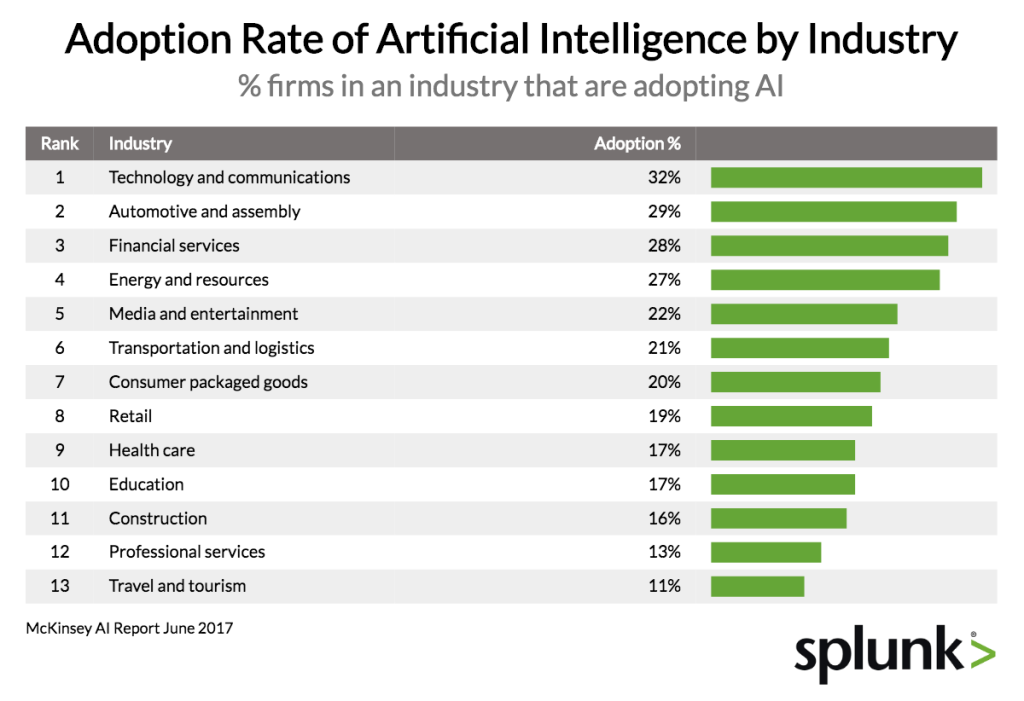
However, an outstanding 82% of the population remains concerned about the application of AI in our daily lives.
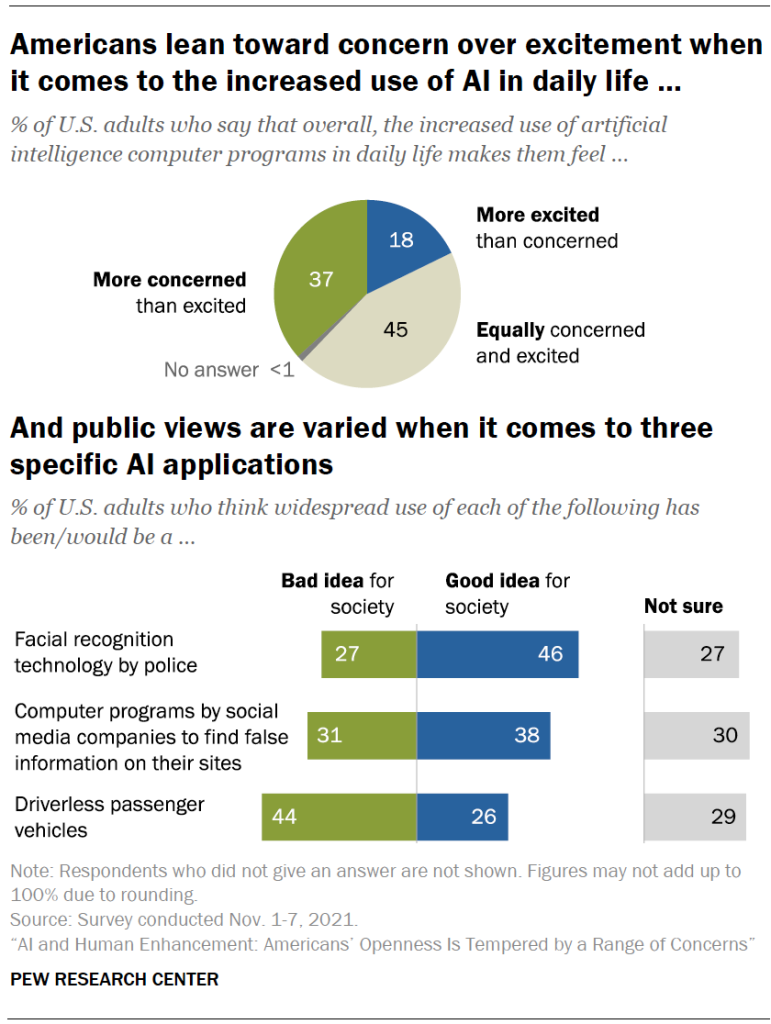
We want to soothe these understandable fears, so come with us as we take a look at three of the most promising use cases of autonomous artificial intelligence. We will explore the many possible benefits of using AI in these industries and how AI is being used to tackle some of the most prolific issues in these fields.
- Transport
- Healthcare
- Cybersecurity
3 use cases of autonomous artificial intelligence
1. Transport
Cars that can drive themselves may sound like pure science fiction found in the latest blockbuster, but they are already an unquestionable reality. In fact, there are currently an estimated 30 million driverless vehicles around the world, and this number is expected to reach 54 million by 2024.

With 29 states now passing legislation regarding automated vehicles (AVs), an estimated 8 million cars driven by autonomous AI systems will be on our roads by 2025. It is no wonder why in 2022, the industry was worth an outstanding $931.34 million and is believed to hit an incredible $1,651.37 billion market size in 2027.

These autonomous vehicles fuse machine learning and AI technology to create a driving experience without human operators. The use of sensors and cameras forms a detailed digital
Through complex algorithm architecture and deep learning, the artificial intelligence system can then use computer vision so autonomous vehicles can react to environmental hazards in real-time, including obstacles, weather, and traffic.
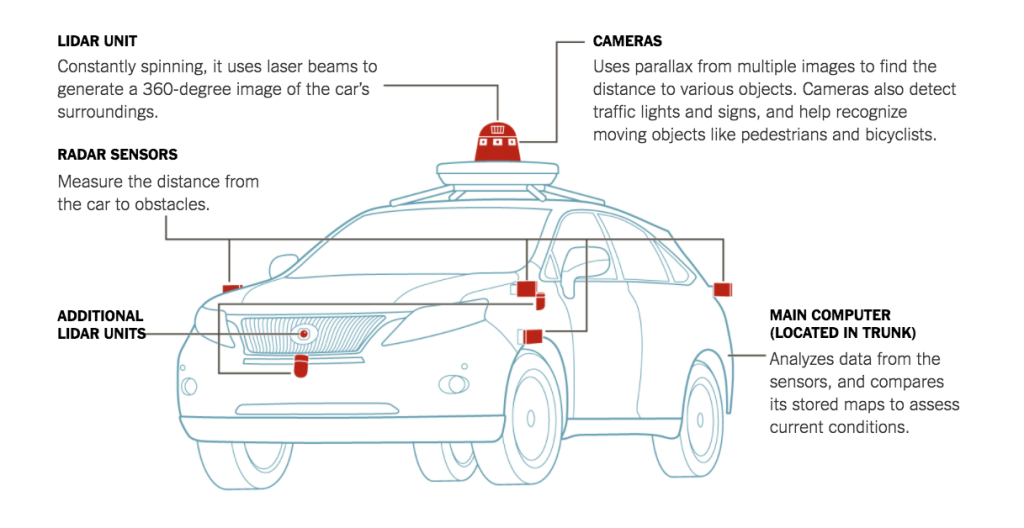
Currently, there are six varying levels of vehicle automation. Take a look at the handy table below for further details on each level.
| Level | Description |
| 0 | No automation, fully manual drive |
| 1 | A vehicle with a singular automated feature |
| 2 | Steering and acceleration are AI controlled, but human intervention is required |
| 3 | AI can monitor environmental hazards, but human override is needed |
| 4 | Artificial intelligence takes full control of driving in specific circumstances, but human intervention is possible |
| 5 | Fully driverless in all conditions, the car performs all tasks without human interaction |
The benefits of using an autonomous system in driving are endless; take a look at our top five real-world advantages of driverless vehicles.
- Eradicates human error: Shockingly, 38,824 deaths were recorded due to fatal car accidents in 2020. It is estimated that about 94% of car accidents are due to human error and slips in common sense rather than vehicle malfunction or environmental factors. It is believed that the introduction of driverless vehicles could reduce the number of fatalities by a staggering 90%, meaning that 300,000 lives would be saved each decade.

- Driving for everyone: As of 2023, 15.9% of Americans do not have a valid driver’s license. This restricts an individual’s ability to find work, socialize, commute, and limits their overall sense of freedom. Unfortunately, this affects the most vulnerable members of our society. It is estimated that over 39% of individuals with disabilities are unable to drive, while about 1 in 5 senior citizens (65 and older) have stopped driving altogether. Driverless cars mean anyone can experience the freedom of driving regardless of skill or capability.
- Reduce costs: The average cost to insure a vehicle is $2,014 per year for full coverage and $622 for minimum coverage. However, these figures are expected to decrease rapidly with the introduction of automated vehicles and the eradication of human error. Furthermore, the lack of car accidents will also result in fewer medical bills and car repair costs for drivers.
- Drop in emission output: Did you know that every gallon of fuel used creates 8,887g of CO2? This results in a terrifying 4.6 metric tonnes of carbon dioxide produced by every car. Driverless cars could be the answer to the global warming crisis. For starters, around 58% of autonomous vehicles are electric, meaning fewer harmful emissions are produced. More importantly, numerous factors will improve vehicle efficiency, which will reduce emissions, such as:
- Improved driving style reduces the major culprits of fuel consumption, such as speeding, hard braking, and excessive re-accelerating. This can reduce fuel consumption by 15-20%.
- One vehicle will be able to drive to multiple locations meaning a reduction in the number of cars needed per household.
- Traffic jams will be minimized due to fewer car accidents and AI-controlled traffic flows. The University of Cambridge states that traffic flows could improve by up to 35%.
- By removing the standard safety features of manual cars, it is estimated that AVs can be up to 75% lighter, making them more fuel efficient.
- Time-saving: Autonomous cars using AI technologies mean that your time is suddenly freed up between destinations; you can now use your commute time for relaxing, leisurely activities or work. Furthermore, through the optimization of driving routes and style, passengers can expect to reduce travel time by 40%. This equates to an astonishing 80 billion hours of commuting, which would save the economy up to $1.3 trillion.

2. Healthcare
Mudit Garg, CEO of AI-focused company Qventus, sees the healthcare industry as the ultimate proving ground for autonomous AI. Garg states:
“Healthcare is an enormously complex sector and possibly the most-regulated business in the country. The sheer volume of menial, repetitive tasks that are part of caring for patients doesn’t allow caregivers to perform at the top of their licenses and focus on the work that is most crucial for patients. AI can simplify many of those processes.”

From diagnostics to treatment, the potential to revolutionize the health industry and save countless lives is truly breathtaking. The infusion of machine learning algorithms and computer science could reduce early deaths by 10-30%, which could equal up to 14 million lives.
The truth is that the health sector is already feeling the benefits of autonomous systems and AI integration in numerous areas. In fact, 97% of medical professionals believe that AI is effective at improving clinical outcomes. Likewise, the same study found that 91% of healthcare executives saw an improvement in health system efficiency

Take a look at some of these revolutionary use cases for autonomous intelligence in the healthcare industry:
- Diagnosis: Countless articles claim that we are living in an epidemic of misdiagnosis. In fact, according to one study, a total of 7.4 million incorrect diagnoses are made every year in the USA, which results in 2.6 million cases of unnecessary harm. By analyzing data sets with natural language processing and utilizing machine learning models, AI initiatives that use data science are now able to diagnose 72.52% of illnesses correctly. This figure is even more than the average doctor, who can successfully diagnose patients with a 71.4% rate of accuracy.
- Clinical decision support: It is estimated that about 250,000 patients die from medical mistakes and poor decision-making. By using big data analytics, AI can make the optimal decision in almost any clinical situation. This is done in three steps:
- Acquire patient data
- Summarize data
- Suggest the best course of action
- End-of-life care: Sadly, less than half of patients who need palliative care actually receive it, which causes unneeded suffering and pain. The integration of AI looks to make this often sad, confusing, and frightening time as painless as possible. Programmers can now create autonomous systems with artificial intelligence that uses a deep learning algorithms to examine extensive data sets to predict mortality. This allows plans to be set in motion about palliative care, medication, and treatments before the patient reaches a terminal capacity.
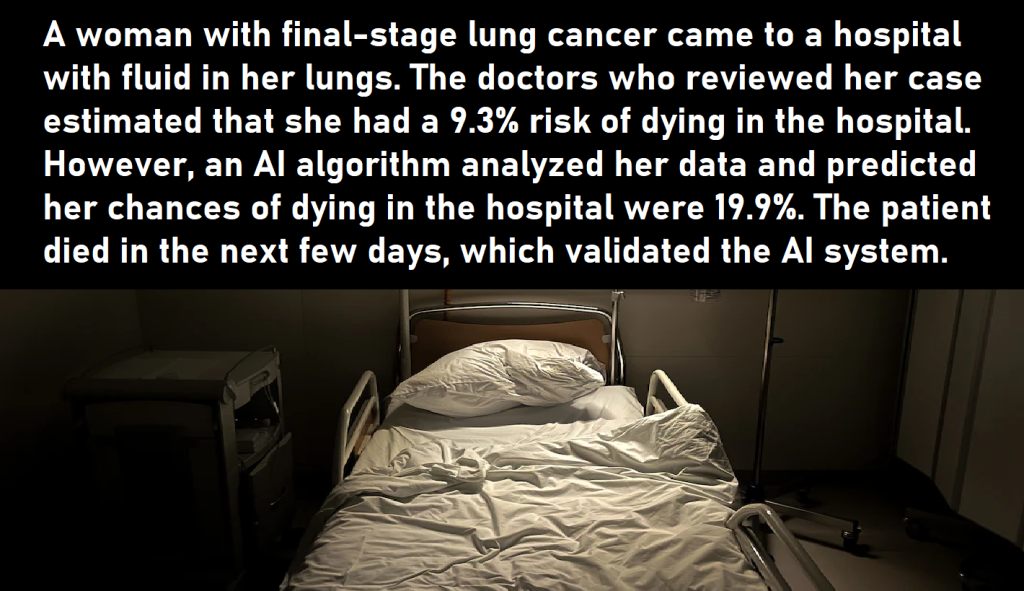
- Drug research: It can take an average of 10 years for a new drug to go through rigorous laboratory tests and finally reach patients. The development of a new drug can cost an estimated $1,237,185,856, but despite the immense cost in time and finance, only 1 in 5 drugs ever reach the market. The implementation of AI and machine learning has revolutionized drug discovery by analyzing immense amounts of data to discover unforeseen patterns that result in new medication.
- Virtual health assistants: AI is replacing human labor in the more mundane medical tasks such as responding to patients via calls and email, managing medical information, scheduling appointments, repeating prescriptions, and sending patient reminders. This frees up medical practitioners’ time, potentially up to 499.8 million hours, allowing them to focus on more critical tasks.
3. Cybersecurity
Unbelievably, a cyber attack happens every 39 seconds, meaning approximately 808,615 attacks occur annually. That is a truly terrifying thought, which is only exaggerated when you consider each data breach costs an unbelievable $9.44 million. It is estimated that by 2025, cybercrime will cost a whopping $10.5 trillion annually.
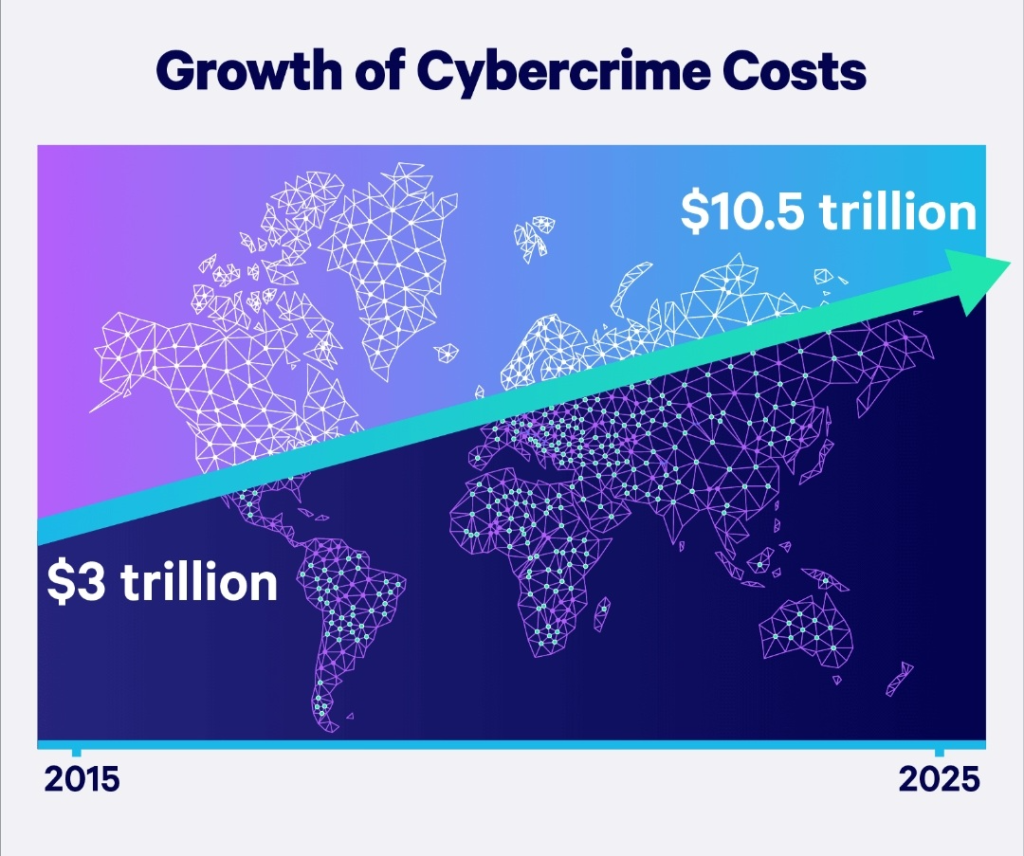
Now, you may be under the misguided preconception that your small business is entirely safe from this type of crime; after all cybercriminals tend to target government agencies and mega-corporations. Unfortunately, this is simply false. In fact, 43% of cyber attacks are aimed toward small businesses, with 66% of these companies reporting cyber attacks in 2020.
Do you think you are safe? Here are some of the hardest hit sectors by cyber attacks:
- Finance
- Healthcare
- Public administration
- Manufacturing
- Education
- Transportation
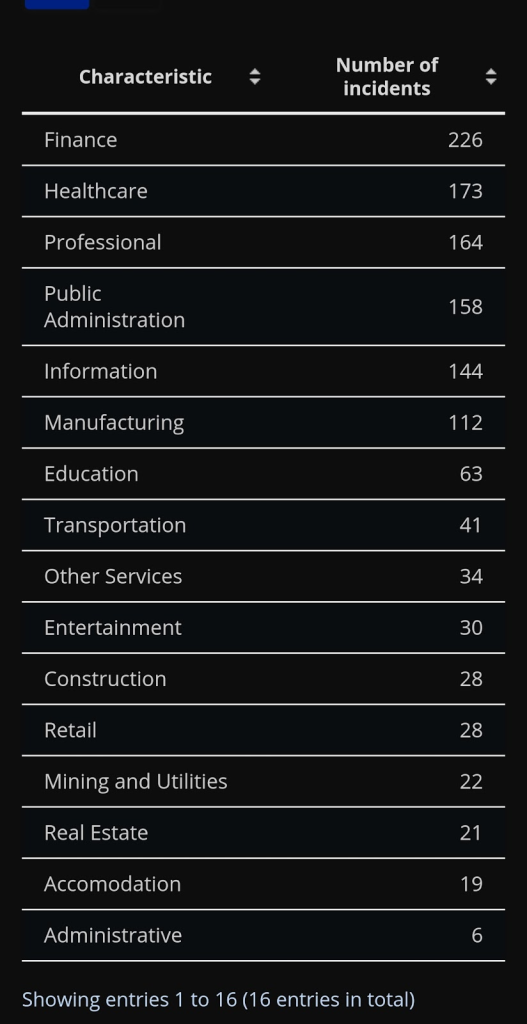
And with only 5% of cyber criminals being prosecuted, the defense against cyber attacks seems to fall to the responsibility of business owners.
Shockingly, only 57% of small businesses believe they have an effective infrastructure to ward off security breaches and cyber threats. This leaves these companies open to countless cyber threats, the most common being:
- Phishing/ social engineering
- Compromised or stolen devices
- Credential theft

These horrific attacks can cause a vast range of negative effects to your company, including:
- Financial loss: The theft of financial information is the most obvious impact on finances; however, the side effects of a cyber attack can have a much broader reach. This can include; suspension of trading, cost of repairs, and loss of clients.
- Downtime: A cyber attack can grind your company’s operations to a halt and reduce productivity. The average cost of downtime to a corporation is roughly $5.1 million.
- Reputation: The loss of valuable personal data can have an incredibly negative effect on your relationship with your clients and customers. 65% of cyber attack victims lost trust in the company that failed to protect their data from a threat.
Thankfully all is not lost; autonomous artificial technology seems to be the answer to the recent onslaught of harmful security breaches. AI cybersecurity systems, such as IBM’S QRadar, are becoming increasingly popular defenses against these attacks, with over 66% of business executives already implementing them into their strategies.

This sudden upsurge in the adoption of AI cybersecurity tech could be due to the fact that 56% of companies believe their cybersecurity analysts are overworked. A further 23% of execs state that their teams are unable to examine threats thoroughly.
Currently, 69% of companies state that they would be unable to respond to attacks without AI. But why? Here is our rundown on the top benefits of using AI technology in cybersecurity:
- Speed: For a cyber security team to identify the overwhelming amounts of threats, they must scour mass amounts of data which is both time-consuming and exhausting. In fact, it is estimated that it can take an average of 277 days to identify and resolve a breach. In contrast, AI can scan endless amounts of big data in minutes while remaining constantly alert without showing any signs of fatigue.
- Automated defense: Security Orchestration, Automation, and Response (SOAR) systems automatically detect and respond to perceived threats. They collaborate with other tools to isolate and eradicate cyber attacks without the need for human intervention.
- Removes human error: Fatigue, carelessness, and tedium can provide access to your infrastructure for cybercriminals. A recent study showed that the cause of 88% of data breaches could be traced back to human error. The use of AI eradicates this potential vulnerability by taking over the mundane and tedious tasks of cybersecurity.
- Phishing detection: In 2022, 48% of all emails sent were spam, which means about 3.4 billion spam emails are sent every single day. Phishing is the number culprit of data breaches, and Google has been quick to act using their spam filtering AI called Tensorflow to stop over 100 million emails.
- Biometric authentication: Passwords are a thing of the past. A study has linked 81% of all data breaches to weak passwords. Now, AI can use both facial recognition and biometrics to block unwanted users from systems with ease. 70% of consumers believe that biometrics offer superior security to traditional passwords.
The future is automation
We have shown how autonomous artificial intelligence is revolutionizing three key sectors around the globe, but we’ll always need human intervention and human intelligence. Do not think that is all automated AI has to offer. Its incredible benefits are felt across countless industries including:
- Retail
- Finance
- Real estate
- Sales
- Food tech
- Travel
- Marketing
- Art and entertainment
- Manufacturing
- Software development
With an estimated market size of $199.78 billion in 2022, which is expected to grow to $1,591.03 billion in 2030, it seems that the AI industry is on course to affect every aspect of our lives in the near future.
Check out the very best AI apps that are revolutionizing every industry here at the Top Apps directory.
Daniel Coombes
Daniel is a talented writer from the UK, specializing in the world of technology and mobile applications. With a keen eye for detail and a passion for staying up-to-date with the latest trends in the industry, he is a valuable contributor to TopApps.ai.
Recent Articles

Learn how to use advanced search tools, newsletters, and reviews to uncover the perfect AI-focused podcast for you.
Read More
Explore the top beginner-friendly AI podcasts. Our guide helps non-techies dive into AI with easy-to-understand, engaging content. AI expertise starts here!
Read More
Explore the features of The AI Podcast and other noteworthy recommendations to kick your AI learning journey up a notch. AI podcasts won’t...
Read More